Phu Quoc, Vietnam’s pearl island, is not only famous for its long stretches of white sand beaches and crystal-clear blue sea, but also a treasure trove of invaluable nature – Phu Quoc National Park. Dubbed the “green lung” of the island, this nature reserve opens up a pristine, majestic world with the most diverse ecosystem in the country. If you are a nature lover, want to find peace and experience new things, Phu Quoc National Park is definitely a destination not to be missed. This article will be the most detailed guide to visiting this nature reserve, helping you have a complete and memorable journey at Phu Quoc National Park.
Introducing Phu Quoc National Park – A Diverse Nature Reserve
Phu Quoc National Park is not only an attractive tourist destination but also an important nature reserve of Vietnam and the world. It plays a significant role in biodiversity conservation, environmental protection, and sustainable ecotourism development. Covering a vast area of over 31,000 hectares, Phu Quoc National Park includes both terrestrial forests and rich marine ecosystems, creating a magnificent and diverse natural landscape.
Where is Phu Quoc National Park? Directions and Essential Information
Geographical Location: Phu Quoc National Park is located in the Northeast of Phu Quoc Island, belonging to Phu Quoc City, Kien Giang province. Its area spans across many communes and wards such as Bai Thom, Ganh Dau, Cua Can, and parts of Cua Duong, Ham Ninh, Duong To, and Duong Dong.
Transportation: From the center of Duong Dong ward, you can easily travel to Phu Quoc National Park by motorbike, car, or taxi. The distance from the center of Duong Dong to the national park gate is about 13km to the Northeast. The road is quite convenient; just follow Nguyen Trung Truc Street and then turn right onto Duong Dong – Bai Thom Street.
Contact Information:
- Address: Northeast of Phu Quoc Island, Phu Quoc City, Kien Giang province
- Area: 31,422 hectares
- Entrance Fee: Free
Map: Phu Quoc National Park Location on Google Maps
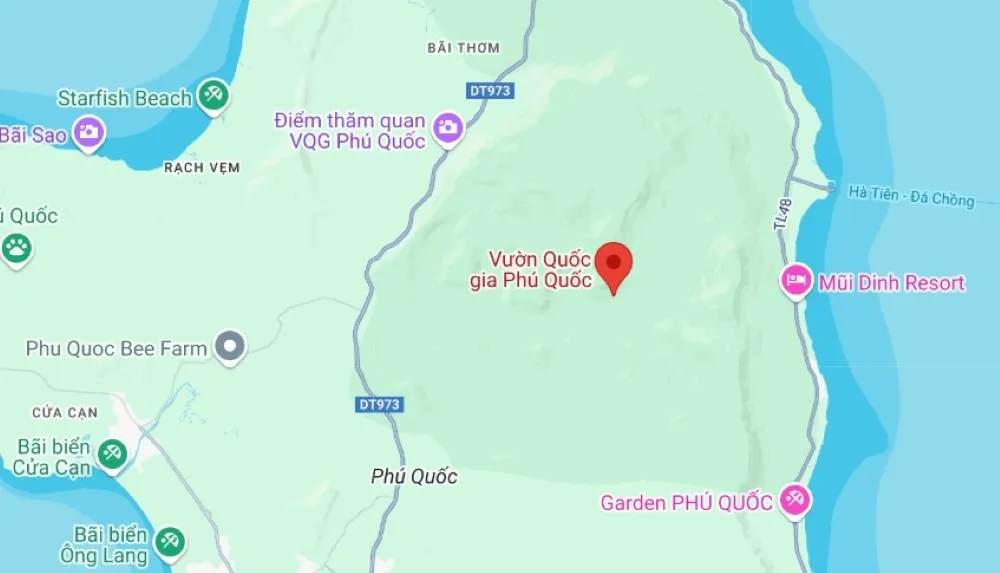
Phu Quoc National Park not only has forests but also converges many different ecosystems such as sea, streams, waterfalls, and hills, creating an ideal living environment for thousands of species of flora and fauna. In 2006, UNESCO recognized the Kien Giang Biosphere Reserve, including Phu Quoc National Park, as a world biosphere reserve, affirming the great value of biodiversity and the importance in nature conservation of this area.

When is the Best Time to Visit Phu Quoc National Park?
Phu Quoc’s weather is divided into two distinct seasons: the dry season and the rainy season.
- Dry Season (November to April): The weather is dry, with little rain, sunny skies, and calm seas, very suitable for outdoor sightseeing and exploration activities. In particular, from February to June is considered the best time to visit Phu Quoc National Park. At this time, the weather is extremely pleasant, not too hot, very favorable for trekking, exploring the forest, and swimming in streams.
- Rainy Season (May to October): The rainy season in Phu Quoc often has showers, but the rain does not last all day. However, if you want to visit Phu Quoc National Park during this season, you need to be more prepared in terms of clothing and transportation to ensure safety and convenience.
In general, you can visit Phu Quoc National Park at any time of the year. However, to have a complete trip and fully enjoy the beauty of this nature reserve, the period from February to June is still the top priority. This is also the blooming season of sim flowers, creating a romantic and poetic scene for the forest.
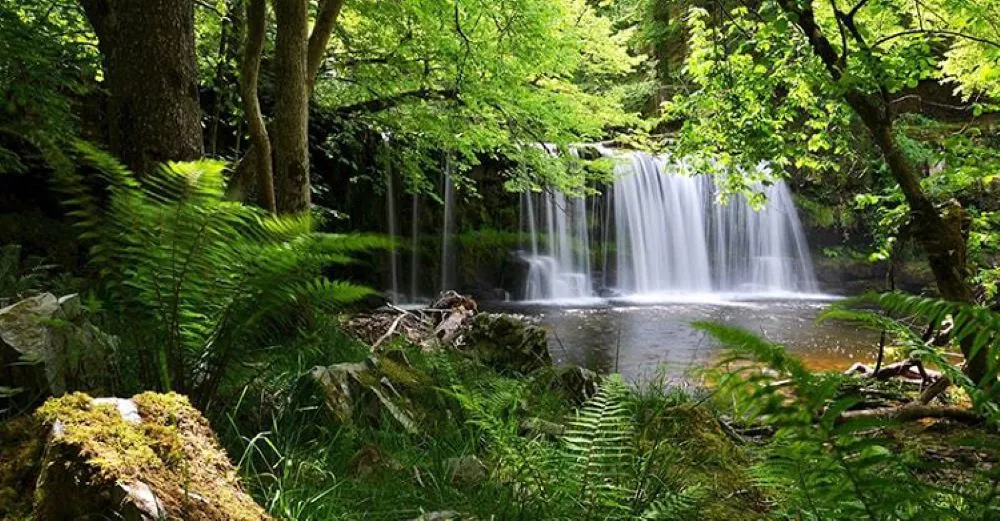
Rich and Diverse Plant Ecosystem
Phu Quoc National Park boasts an extremely rich and diverse flora, one of the highlights attracting tourists and scientists. According to studies, there are hundreds of different plant species here, from tall ancient trees to timber trees, shrubs, vines, and rare plant species.
Diverse Vegetation:
- Primary Forest: Occupies most of the national park area, with many precious timber trees such as beech, Dipterocarpus alatus, Melaleuca, and Hopea odorata, creating vast green forests.
- Wild Orchids: Phu Quoc National Park is a paradise for wild orchids, with thousands of different species, including many rare species such as Paphiopedilum, Cymbidium…
- Medicinal Herbs: This place is also home to many valuable medicinal herbs such as Fallopia multiflora, Adenosma glutinosum, Glycyrrhiza uralensis, with high medicinal value.
- Parasitic Plants: Unique parasitic plants such as ferns and white vine also contribute to the diversity of the plant ecosystem here.
This unique biodiversity not only creates the pristine, majestic beauty of Phu Quoc National Park but also plays an important role in preserving rare gene sources and scientific research.
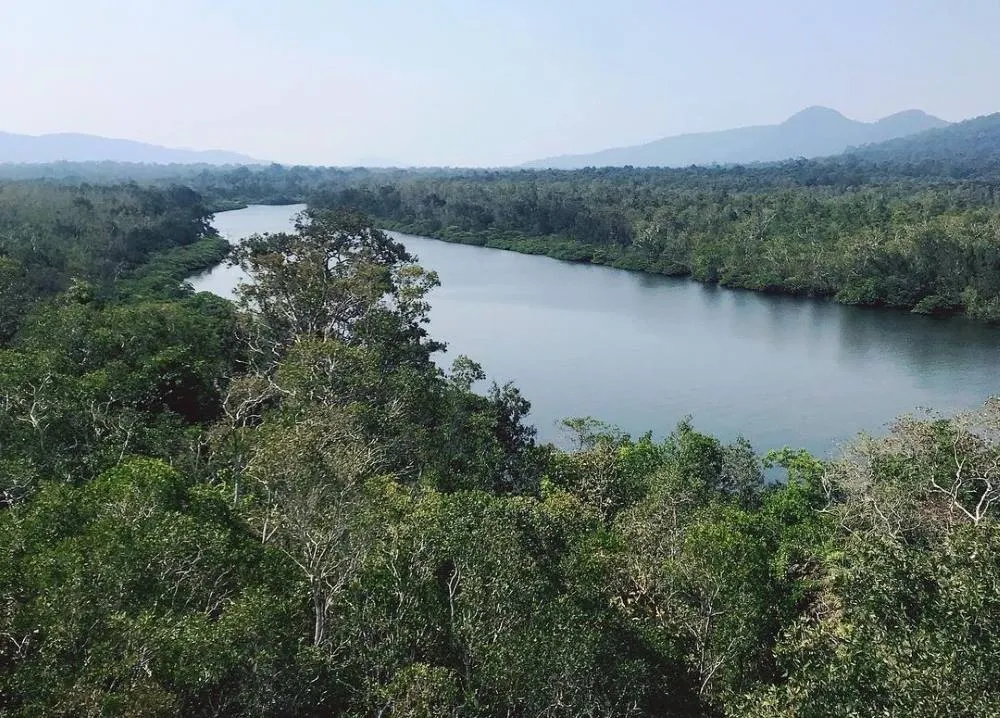
Detailed Directions to Phu Quoc National Park
To get to Phu Quoc National Park, you can choose from many different means of transport, depending on your preferences and personal conditions. Below are detailed instructions on popular means of transportation:
Traveling by Private Vehicle (Motorbike, Car)
If you want to freely explore and be proactive about time, a motorbike or private car is an ideal choice. From the center of Duong Dong ward, you can easily travel along Nguyen Trung Truc Street and Duong Dong – Bai Thom Street to reach Phu Quoc National Park.
Travel Route:
- Start from Duong Dong Center: Go along Nguyen Trung Truc Street towards the north of the island.
- Turn right at Duong Dong – Bai Thom intersection: Pay attention to the signposts to Phu Quoc National Park.
- Continue for about 6km: Go straight on Duong Dong – Bai Thom Street, you will reach the gate of Phu Quoc National Park.
- Park your vehicle and walk: At the park gate, you can park your vehicle and start your journey to explore the primary forest by walking along the trails. Note that the road into the primary forest area may be an unpaved road of about 8km, you should prepare suitable shoes for long walks.
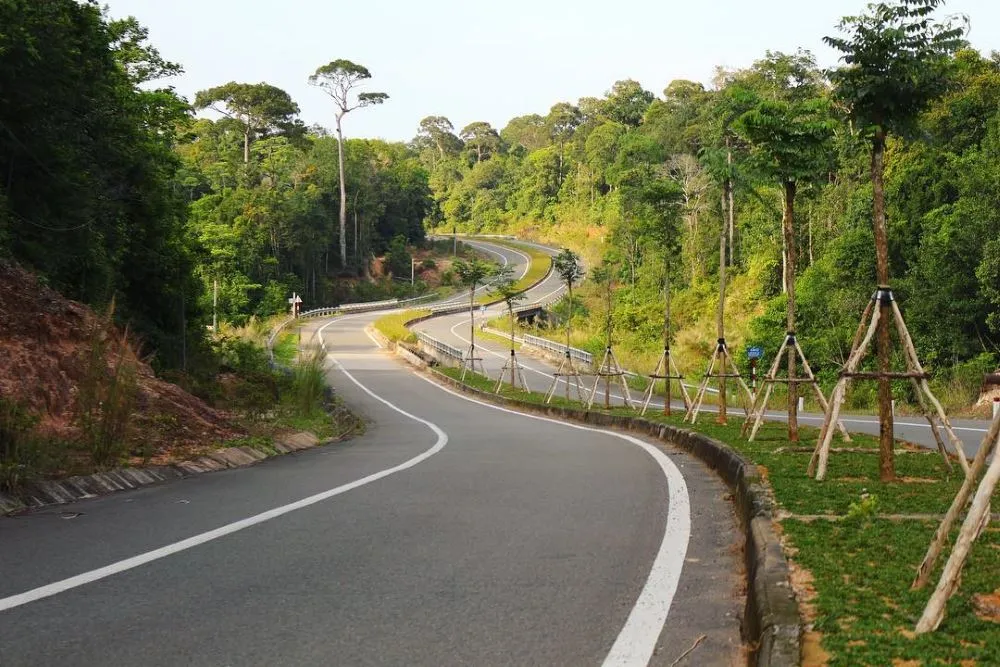
Traveling by Technology Taxi – A Convenient and Safe Choice
Technology taxi is a popular and convenient transportation option in Phu Quoc. In particular, Xanh SM electric taxi service is an environmentally friendly choice and brings a modern and comfortable travel experience.
Advantages of Xanh SM Taxi:
- Convenient and Fast: Easy to book a car via the app or hotline.
- Safe and Professional: Well-trained and dedicated driver team.
- Environmentally Friendly: Using electric vehicles, reducing emissions and noise.
- Wide Coverage: Xanh SM car system is present in many areas on Phu Quoc Island, making it easy for you to travel.
How to Book a Xanh SM Taxi:
- Xanh SM App: Download the Xanh SM app on your phone and book a car with just a few simple steps. Download the app HERE
- Hotline: Call directly to the hotline 1900 2088 to book a car quickly.
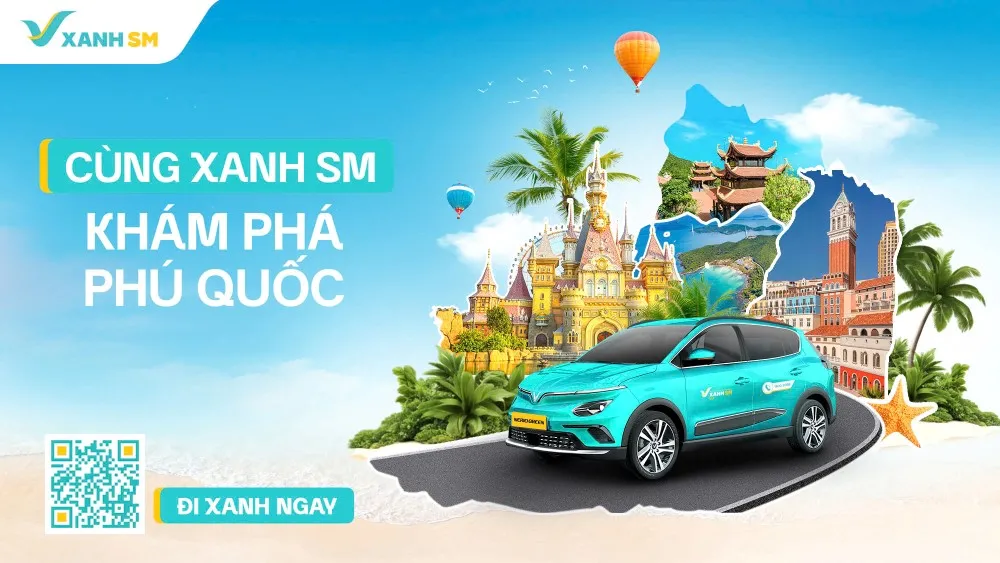
Exploring Phu Quoc National Park: Unmissable Experiences
Coming to Phu Quoc National Park, you will immerse yourself in pristine nature, explore diverse ecosystems, and experience many interesting activities. Below are suggestions for activities not to be missed when visiting this nature reserve:
Explore the Rich Forest and Marine Ecosystems
Phu Quoc National Park is one of the areas with the most diverse and rich ecosystems in Vietnam. It converges many characteristic ecosystems such as primary forest, Melaleuca forest, mangrove forest, rocky mountain forest, streams, waterfalls, sea, and coast.
Forest Ecosystem:
- Primary Forest: With diverse vegetation, many ecological layers, it is home to many rare and precious flora and fauna. You can trek through the forest to explore its pristine beauty and learn about this unique ecosystem.
- Melaleuca Forest: Creates a distinctive landscape with tall Melaleuca trees, often appearing in waterlogged areas.
- Mangrove Forest: Develops in coastal areas, plays an important role in protecting the coastline, and is home to many aquatic species.
Marine Ecosystem:
- Coastline: Phu Quoc National Park has pristine beaches with clear blue water, an ideal place to relax and swim.
- Coral Reefs: The sea around the national park also has diverse coral reefs, attracting many marine species to live. You can participate in scuba diving activities to admire the beauty of the ocean floor.
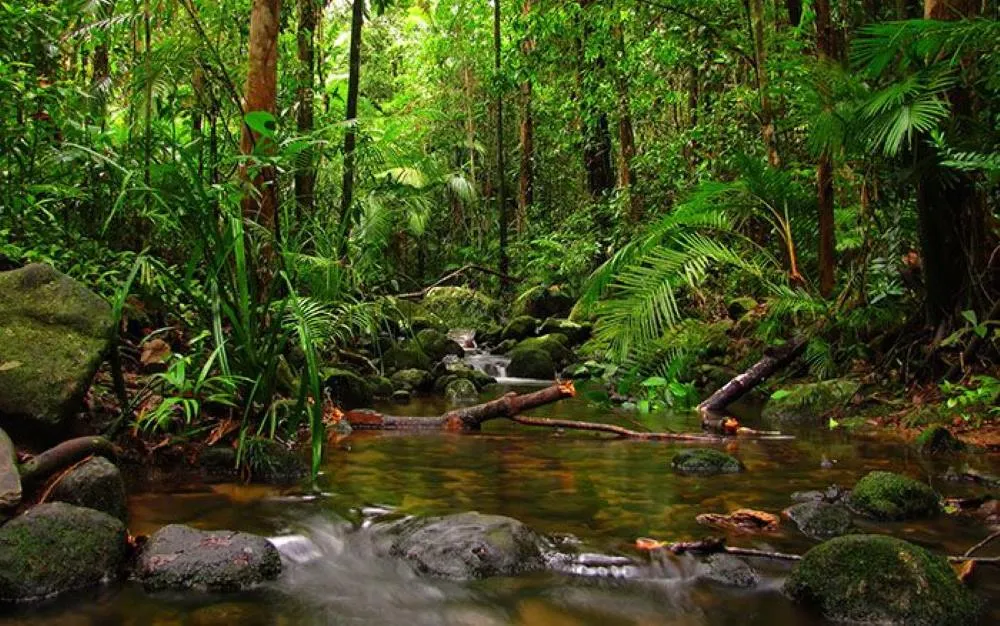
The fauna at Phu Quoc National Park is also extremely diverse, with about 30 species of mammals, more than 50 species of reptiles, and about 200 species of birds. Among them, many rare species have been recorded in the Vietnam Red Book such as:
- Mammals: Black-bearded flying fox, wild boar, red-shanked douc langur, black-cheeked gibbon…
- Reptiles: Elongated tortoise, king cobra, chameleon…
- Birds: Red junglefowl, white-tailed pheasant, wreathed hornbill…

Romantic Purple Sim Flower Season – A Beautiful Check-in Spot
Around March to June, Phu Quoc National Park puts on a romantic purple coat of wild sim flowers. Sim flowers bloom all over the trails and hillsides, creating a poetic and charming scene. This is an ideal time for you to stroll in the forest, admire sim flowers, and take beautiful check-in photos.
At the end of the year, when the sim flower season passes, you have the opportunity to enjoy ripe sim fruits, with the characteristic flavor of the pearl island. Phu Quoc sim is not only a delicious wild fruit but is also processed into many specialty products such as sim wine, sim syrup, sim candy…
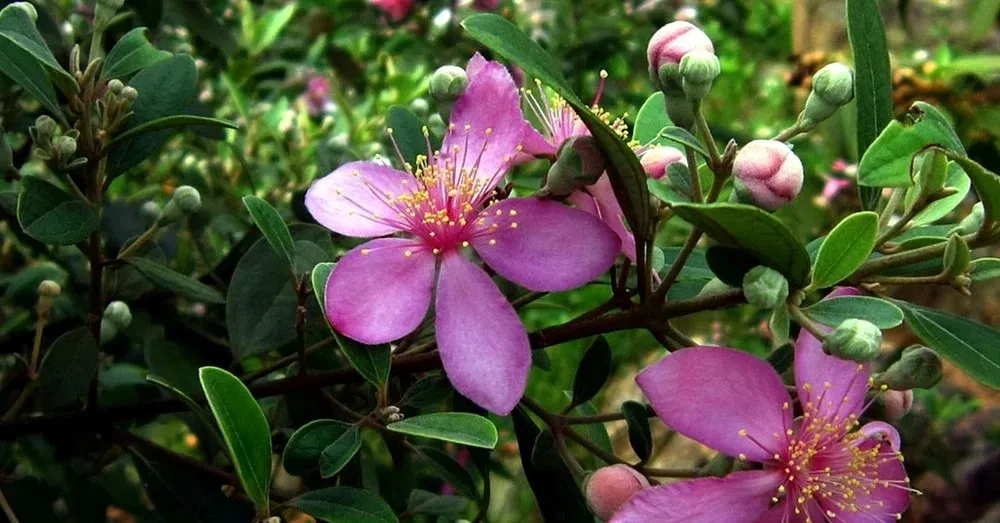
Immerse Yourself in Cool Stream Water in the Old-Growth Forest
Phu Quoc National Park is famous for many beautiful and clear streams such as Da Ban Stream, Tranh Stream, Da Ngon Stream, Tien Stream… These streams originate from the Ham Ninh mountain range, flowing murmuring through rocks, creating small waterfalls and beautiful natural lakes.
Coming here, you can enjoy the fresh, cool air of the primary forest, immerse yourself in the cool stream water, listen to birds singing and the murmuring of streams. This is a wonderful relaxing experience, helping you relieve fatigue and immerse yourself in nature.
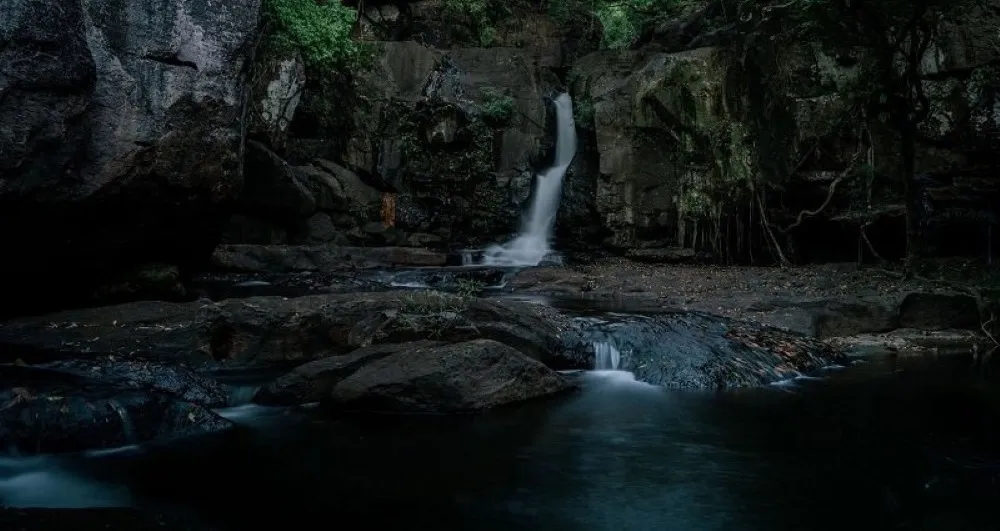
Conquer Chúa Mountain Peak – The “Roof” of Phu Quoc
Chua Mountain, with a height of 603m, is known as the “roof” of Phu Quoc and is an attractive destination for those who love mountain climbing and exploration. The road to the top of Chua Mountain is quite winding and rugged, but in return, you will admire the pristine beauty of the mountains and forests and see the panoramic view of Phu Quoc National Park from above.
The journey to conquer Chua Mountain peak is not only a test of endurance but also an opportunity for you to train your will and explore your limits. When you reach the top of the mountain, you will feel all fatigue disappear, replaced by the joy of conquest and the awe of the majestic natural scenery.
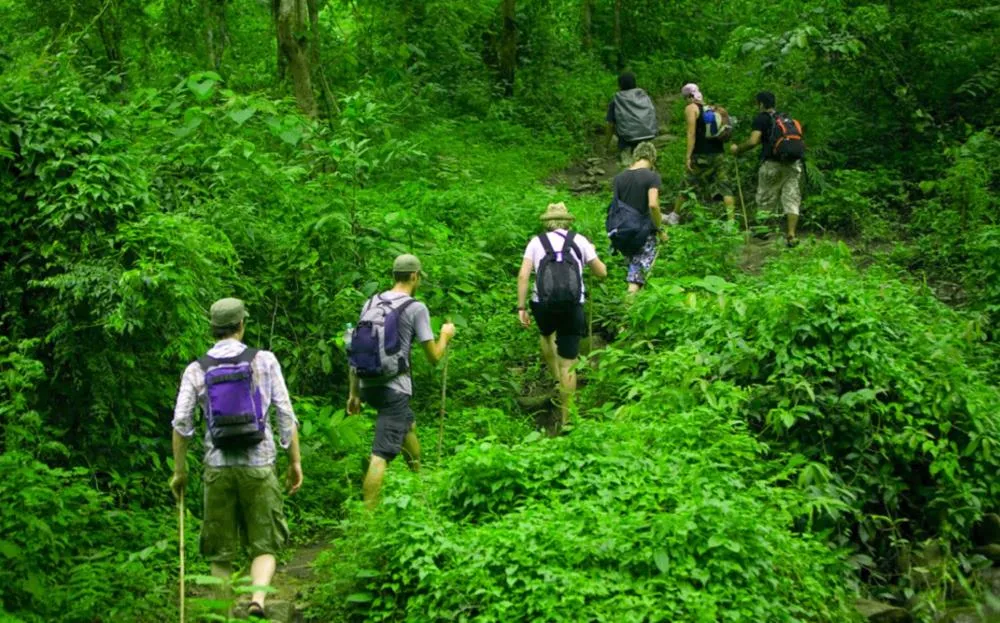
Other Experiential Activities
In addition to the above activities, Phu Quoc National Park has many other interesting experiences waiting for you to discover:
- Hiking/Trekking: Explore trails through the forest, discover diverse ecosystems, and admire the pristine beauty of nature.
- Bird Watching: Phu Quoc National Park is home to many rare bird species, an ideal destination for bird lovers.
- Camping: Organize camping in the forest to enjoy the fresh air and get close to nature (permission is required before camping).
- Learn about Local Culture: Interact with local people, learn about their culture and life.
What to Eat When Visiting Phu Quoc National Park?
Inside Phu Quoc National Park, there are no restaurants or eateries as it is a nature reserve. However, you can prepare snacks and drinks to bring with you to use during your visit.
To enjoy Phu Quoc’s unique cuisine, you can visit Rach Vem fishing village, not far from the national park. Rach Vem is famous for fresh seafood and specialties such as:
- Herring Salad (Gỏi cá trích): Phu Quoc’s famous salad, with fresh herring, raw vegetables, and special dipping sauce.
- Ham Ninh Crab (Ghẹ Hàm Ninh): Fresh crab steamed or grilled, with firm, sweet meat.
- Grilled Fan Mussel (Còi biên mai nướng): Delicious and attractive grilled dish.
- Sea Cucumber (Hải sâm): Nutritious and rare dish.
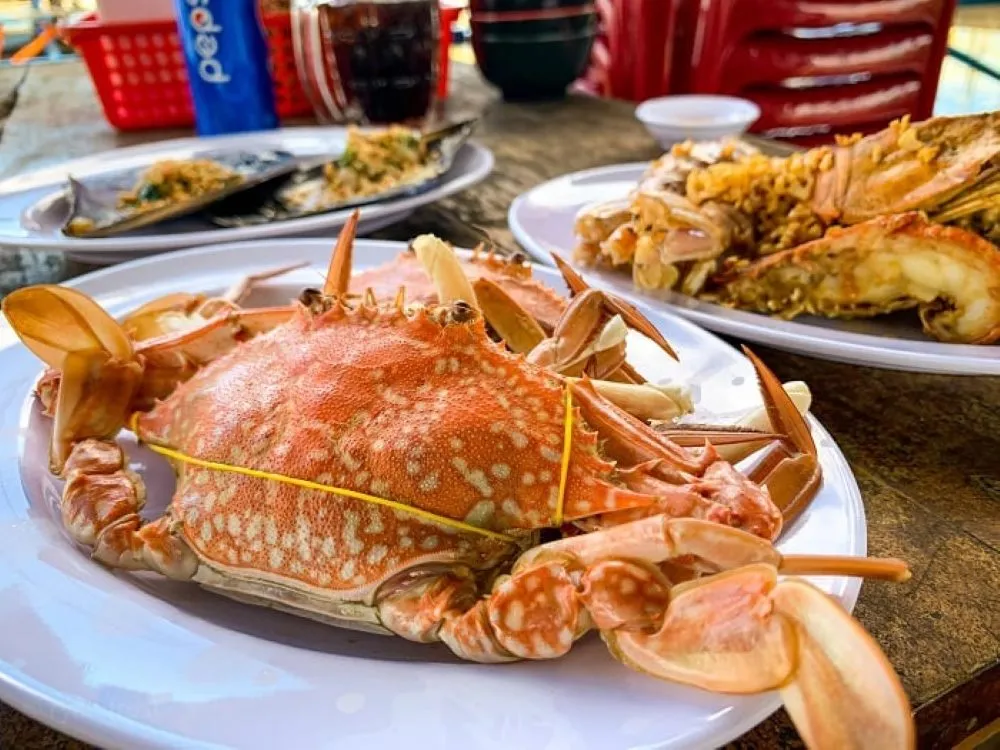
In addition, you can also find many delicious restaurants and eateries in Duong Dong town area or tourist areas near Phu Quoc National Park.
What to Prepare When Visiting Phu Quoc National Park?
To have a safe and complete visit to Phu Quoc National Park, you should carefully prepare necessary items:
- Sports Shoes: Choose comfortable shoes with good grip for easy movement on mountainous terrain.
- Clothing: You should wear long-sleeved, light, and sweat-absorbent clothes to avoid sun, insects, and skin scratches.
- Sunscreen, Hat, Sunglasses: Protect your skin and eyes from the harmful effects of sunlight.
- Medication: Bring some basic medicines such as headache medicine, stomachache medicine, insect repellent, antiseptic…
- Drinking Water and Snacks: Ensure adequate water and energy supply during the visit.
- Map or Map Application: To orient and track the route.
- Camera, Phone: Record memorable moments and contact when necessary.
- Waterproof Bag: Protect electronic devices and personal items from getting wet.
- Environmental Awareness: Prepare personal trash bags and do not litter in the forest.

Suggested Tourist Destinations Near Phu Quoc National Park
After exploring Phu Quoc National Park, you can combine visiting other attractive destinations nearby to have a more diverse and rich Phu Quoc exploration journey.
| Attraction | Address | Distance | Highlights |
|---|---|---|---|
| Hon Mot Island | Bai Thom Commune, Phu Quoc City, Kien Giang | ~ 11.5km | Pristine small island, clear blue sea, beautiful coral reefs, peaceful space. |
| Bai Thom Beach | Bai Thom Commune, Phu Quoc City, Kien Giang | ~ 9km | Pristine beach, fine sand, shallow sea, green forest, suitable for relaxation. |
| Bai Dai Beach | Bai Dai, Ganh Dau, Phu Quoc City, Kien Giang | ~ 34km | One of the most beautiful beaches in Vietnam, fine white sand, blue sea, shady coconut trees, beautiful sunset view. |
| Rach Vem Fishing Village | Rach Vem, Phu Quoc City, Kien Giang | ~ 23km | Simple fishing village, clear blue sea, floating houses, “starfish kingdom”, fresh seafood. |
Summary of places to visit near Phu Quoc National Park
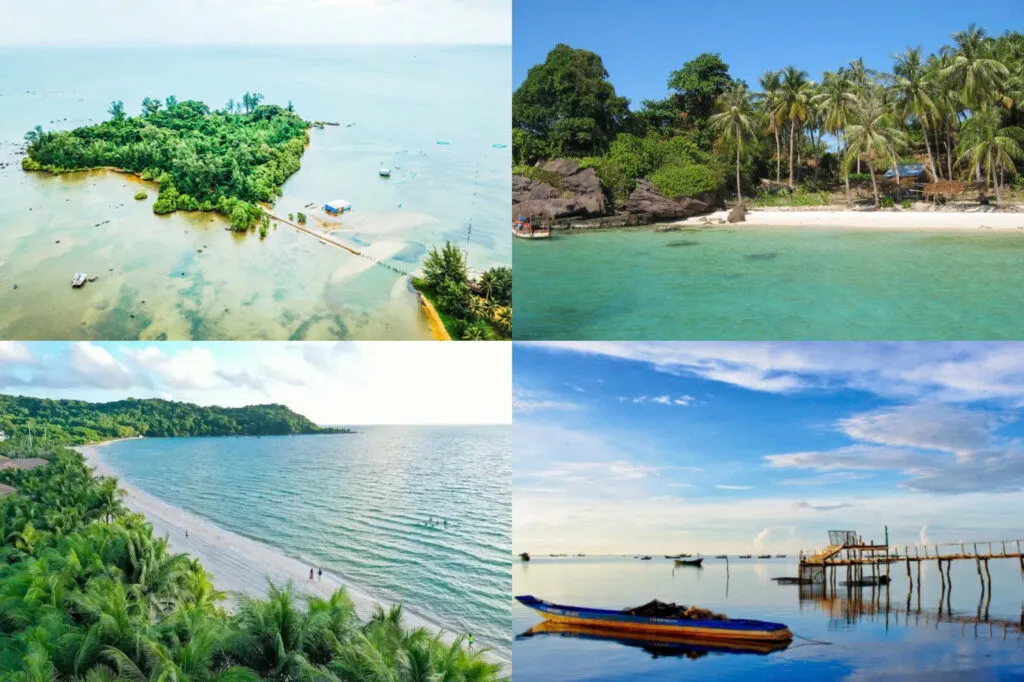
FAQ – Frequently Asked Questions about Phu Quoc National Park
Below are some frequently asked questions and answers to give you more useful information before coming to Phu Quoc National Park:
What is special about Phu Quoc National Park?
Phu Quoc National Park is special because of its ecological diversity, with many different ecosystems such as primary forest, Melaleuca forest, mangrove forest, rocky mountain forest, sea, streams, waterfalls… It is also home to many rare and precious flora and fauna species, with high conservation value.
What is Phu Quoc recognized as by UNESCO?
In 2006, the Kien Giang coastal and marine biosphere reserve, including Phu Quoc, was recognized by UNESCO as a World Biosphere Reserve.
What rare animals are in Phu Quoc National Park?
Phu Quoc National Park is home to many rare animal species such as black-bearded flying fox, wild boar, red-shanked douc langur, black-cheeked gibbon, elongated tortoise, king cobra, red junglefowl, white-tailed pheasant…
What is the role of Phu Quoc National Park?
Phu Quoc National Park plays an important role in biodiversity conservation, environmental protection, sustainable ecotourism development, scientific research, and environmental education.
Phu Quoc National Park is an ideal destination for those who want to explore pristine nature, find peace, and experience new things. With this detailed guide to visiting the nature reserve, hopefully you will have a truly meaningful and memorable trip to the “green lung” of Phu Quoc pearl island.
Read more: Phu Quoc National Park – Xanh SM